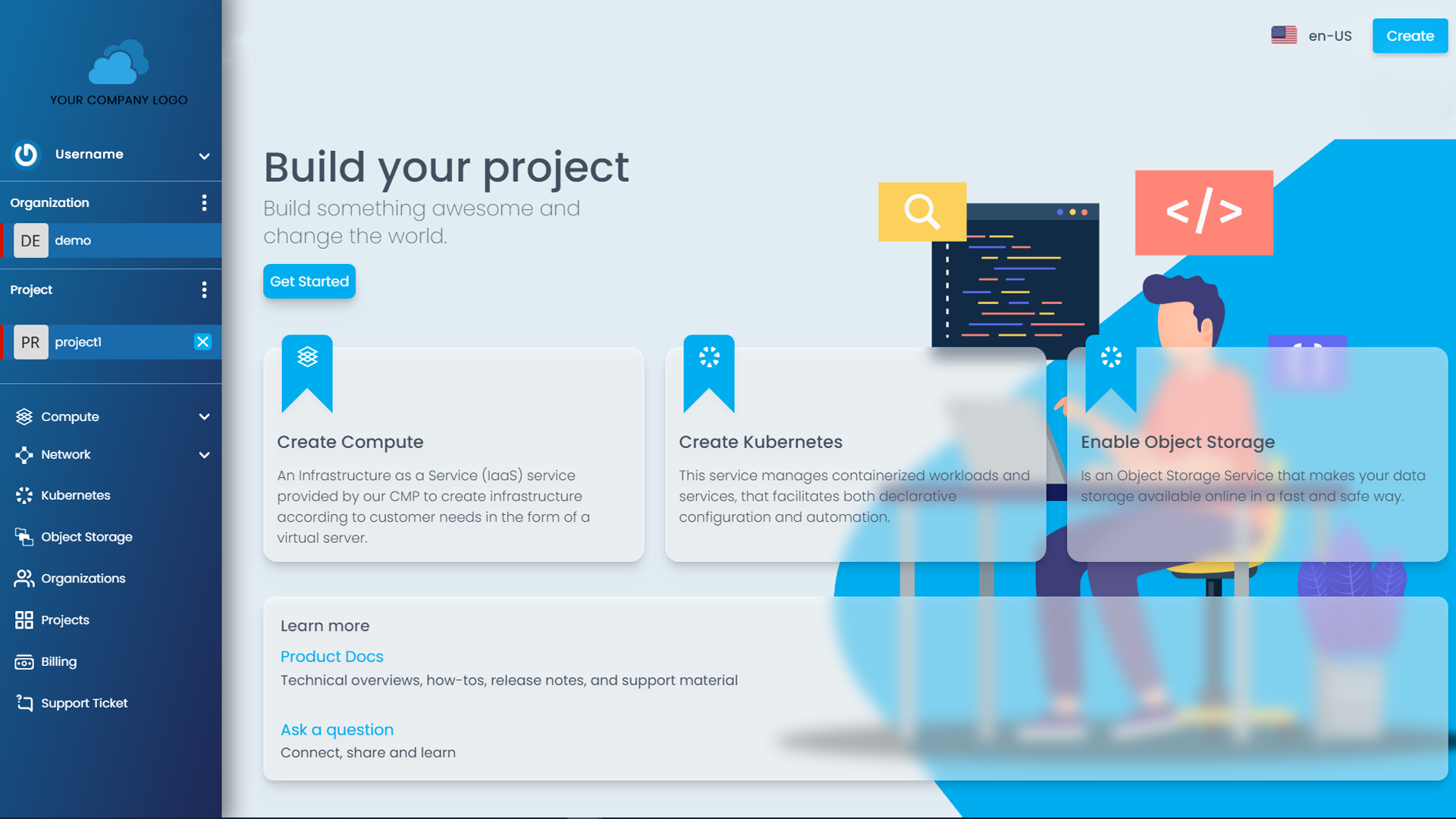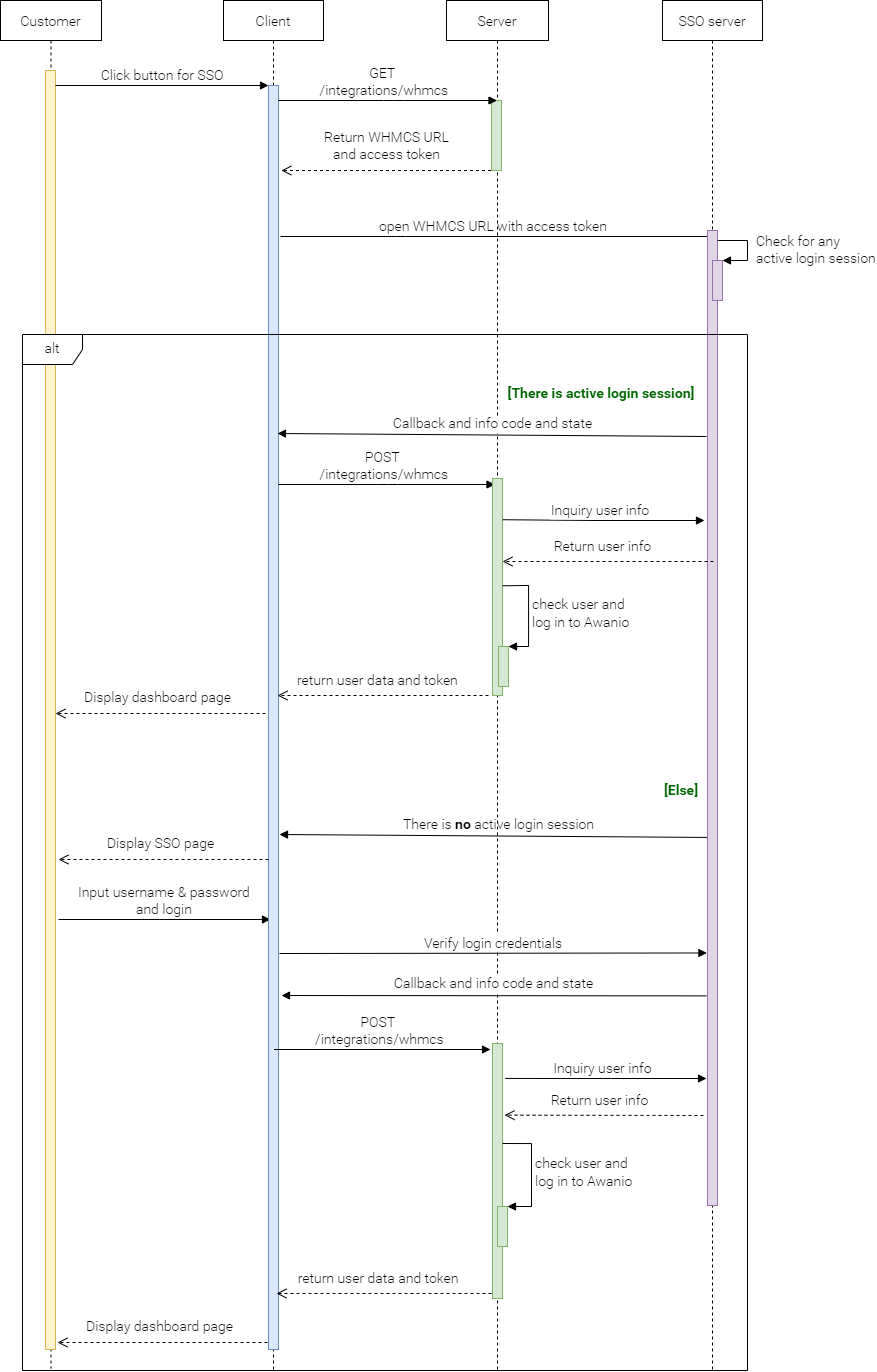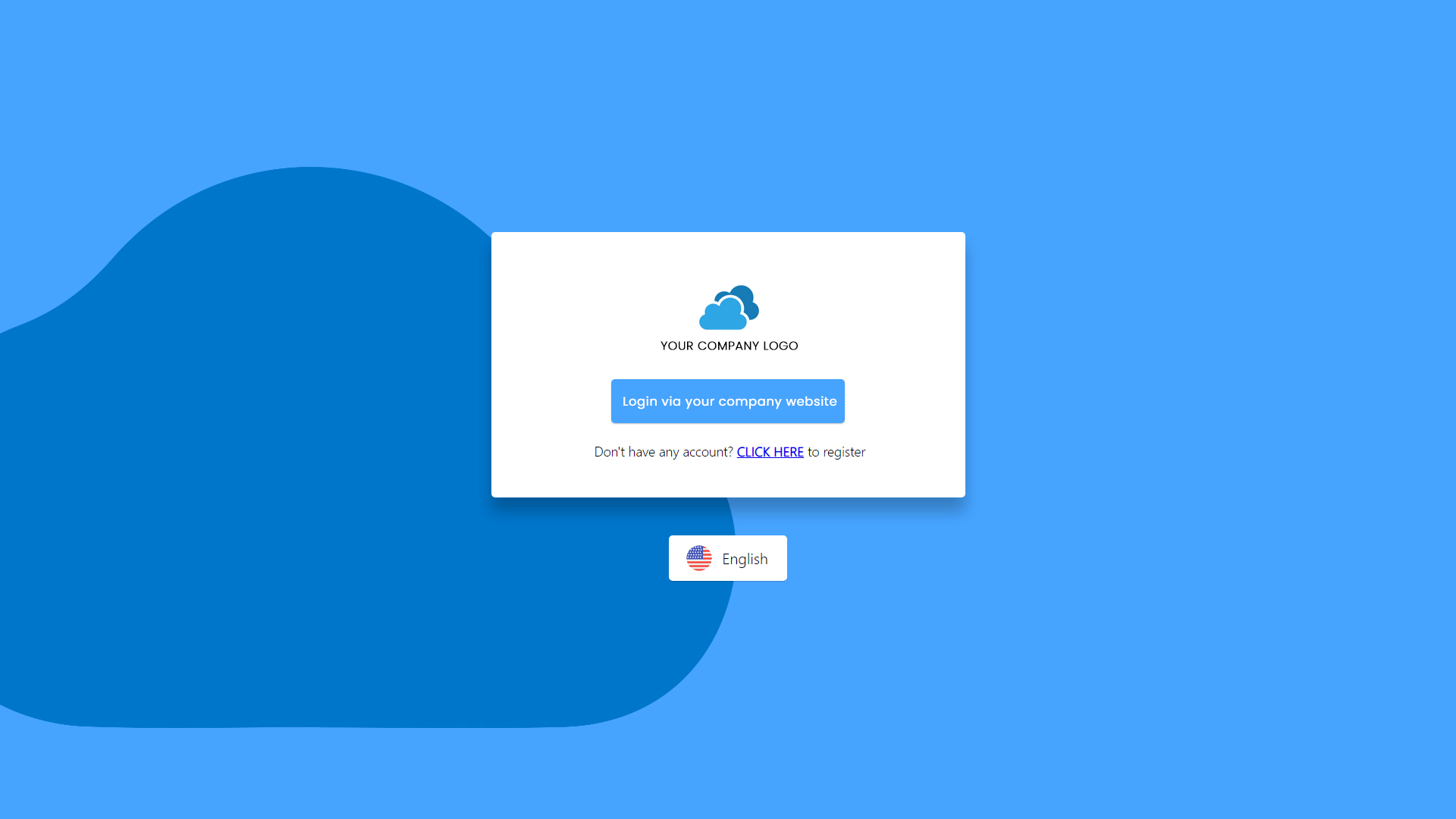Awanio Platform
Awanio Platform is an interface for users to use the cloud services, as displayed below.

Display Customization
You can customize the look of the application with your company logo and preferred colors and font style.


Features
Some features available in the Platform are:
| Service | Feature | Description |
| Virtual Machine | Manage VM | Allows users to manage the lifecycle of VM instances, such as creating, stopping, rebooting and deleting VM instances. |
| Web terminal & VNC Client | Allows users to access VM instances through terminals and VNC without using remote tools. | |
| VM Monitoring | Allows users to monitor the VM data such as CPU, memory, network, disk I/O in the last 1 hour. | |
| Attach/detach public IP to/from VM | Allows users to attach/detach a public IP to/from an instance. | |
| VM Backup | Allows users to create a backup for a running VM instance, scheduled and unscheduled. | |
| Resize VM | Allows users to upgrade/downgrade the size of a VM instance. The new size takes effect immediately. | |
| Custom Tag | Allows users to customize tags for VMs so that they can locate them quickly. | |
| Volume | Manage additional volume | Allows users to manage volumes, such as creating and deleting volumes. |
| Attach/detach additional volume to/from VM | Allows users to attach/detach a volume to/from an instance. | |
| Upsize volume | Allows users to expand a volume whether it is attached or not attached to any instance. | |
| Bare Metal | Manage Bare Metal | Allows users to manage the lifecycle of bare metal servers, such as creating, turning off, turning on and deleting bare metal servers. |
| Multiple create at once | Allows users to create multiple bare metal servers at once with same specifications. | |
| Multiple Public IPs | Allows users to have multiple public IPs for bare metal servers. | |
| Custom Tag | Allows users to customize tags for Bare Metal servers so that they can locate them quickly. | |
| Kubernetes | Manage Kubernetes clusters | Allows users to manage the lifecycle of kubernetes clusters, such as creating and deleting kubernetes clusters. |
| Upgrade version | Allows users to upgrade the available version of kubernetes clusters | |
| Resize clusters | Allows users to upgrade/downgrade the size of a cluster. The new size takes effect immediately. | |
| Custom Tag | Allows users to customize tags for kubernetes clusters so that they can locate them quickly. | |
| Object Storage | Enable/disable object storage | Allows users to enable and disable object storage. Enabling an object storage will include create a bucket and an access key. |
| Manage bucket | Allows users to manage bucket, such as adding, change the access policy and deleting empty buckets. | |
| Manage access keys | Allows users to manage access keys to object storage, such as adding and delete them. | |
| Manage documents in buckets | Allows users to manage documents inside buckets, such as adding, sharing, downloading and deleting documents. | |
| Network | Manage reserved IP addresses | Allows users to manage reserved IP addresses, such as reserving a public IP address and delete it. |
| Custom Tag | Allows users to customize tags for reserved IP addresses so that they can locate them quickly. | |
| Manage VPC | Allows users to manage VPC, such as creating and deleting VPC addresses. VPC address can be used when creating VM instance. | |
| Organization | Manage organizations | Allows users to manage the lifecycle of an organization, such as creating and deleting an organization. The default organization is generated automatically by the system. |
| Manage profile | Allows users to manage organization profile, such as editing the name and photo. | |
| Manage members and their access permissions | Allows users to add and delete members of an organization, as well as set the role and access permission for each member. | |
| Resource usage and quota info | Allows users to view usages and quotas on organization resources, such as the vCPU resource quota, memory resource quota, storage resource quota and other resource quota. | |
| Credit and account payable info | Allows users to view credit info to create resources and total invoice amount that has not been paid. | |
| Project | Manage projects | Allows users to manage the lifecycle of a project, such as creating and deleting it. |
| Manage profile | Allows users to manage project profile, such as editing the name and photo. | |
| Manage members and their access permissions | Allows users to add and delete members of a project, as well as set the role and access permission for each member. | |
| Billing | Applied for Metered billing type | |
| Top up credit | Allows users to top up Awanio credit to create resources. | |
| Manage cards for Postpaid mode | Allows users to manage organization profile, such as editing the name and photo. | |
| Redeem voucher | Allows users to get an extra credit by redeeming the voucher code provided by the admin or service provider. | |
| Invoice | Allows users to view organization invoices in a list and in details. | |
| Support | Manage issue tickets | Allows users to manage the issue tickets, such as creating, replying and updating the priority and status. It is possible to include attachments to explain more details of the issue, in jpg, png and pdf format file. |
| Live chat integration | If you already have a live chat feature on your website, it can be embedded to Awanio platform so that users can directly connected to your support team. | |
| Account | User registration | Allows users to manage the lifecycle of a project, such as creating and deleting it. If you are using SSO, we may provide integration to the registration page on your website. |
| Reset/change password | Allows users to reset their password in case they have forgotten it or want to change it for security reason. | |
| SSH Public Keys | Allows users to input their public keys and use them for SSH access of bare metal or VM instances across registered organizations and projects. | |
Single Sign On (SSO) using WHMCS
We provide SSO integrated to your system using WHMCS, so that existing users in your system don’t have to re-register. Users are redirected to your login area using a single-use access token.
There are two endpoints for WHMCS integration:
-
Endpoint to get the credential for WHMCS integration
GET /integration/WHMCS. It will return these properties:- state: Single-use access token generated in Awanio Server.
- whmcs_client_id: client ID for integration.
- whmcs_url: URL of your website, it will be followed by the path to verify the login session.
- whmcs_client_callback: URL for a callback after checking the login session.
Properties of whmcs_client_id, whmcs_url and whmcs_client_callback are configurable in the Configuration menu, on the Integration tab.
-
Endpoint used for logging in using 2 properties: code and state,
POST /integration/WHMCS. The code property is generated by your server for user info inquiries.

We may also provide an account registration link from the Awanio login page to the registration page on your website. After the registration process is complete on your website, users can return to the login page then log in via SSO.

Single Sign On (SSO) using LDAP
Awanio also supports Secure Single Sign-On (SSO), enabling users to authenticate once via external directory systems such as Active Directory (AD) and LDAP to securely access the cloud platform portal.
You must set the AD’s controller UUID and enable the AD’s login method on the platform.